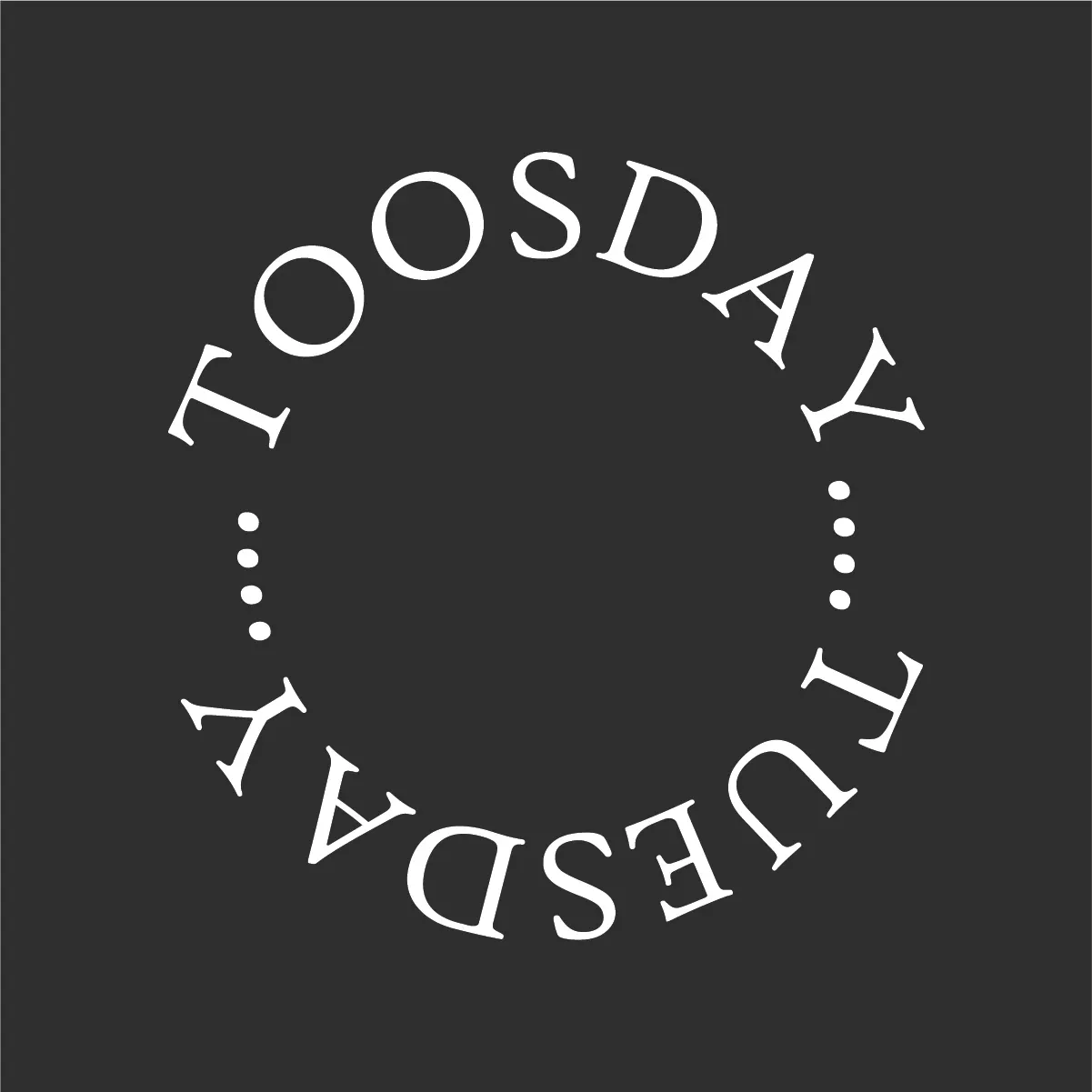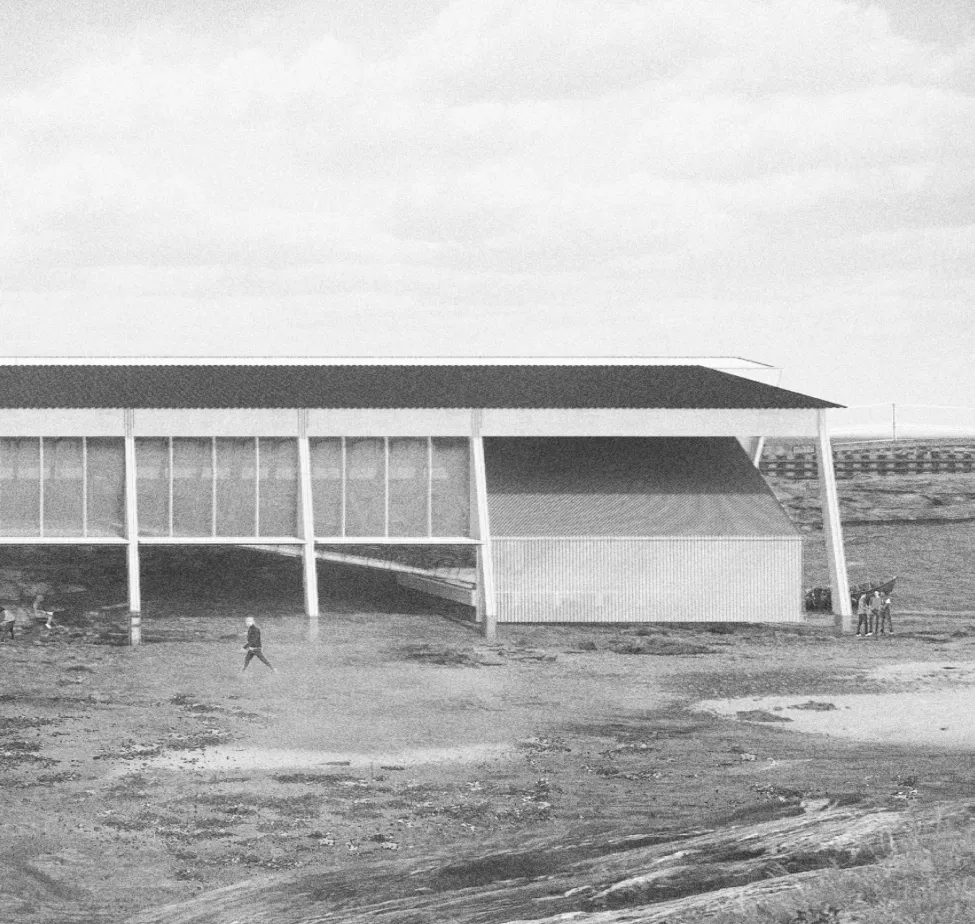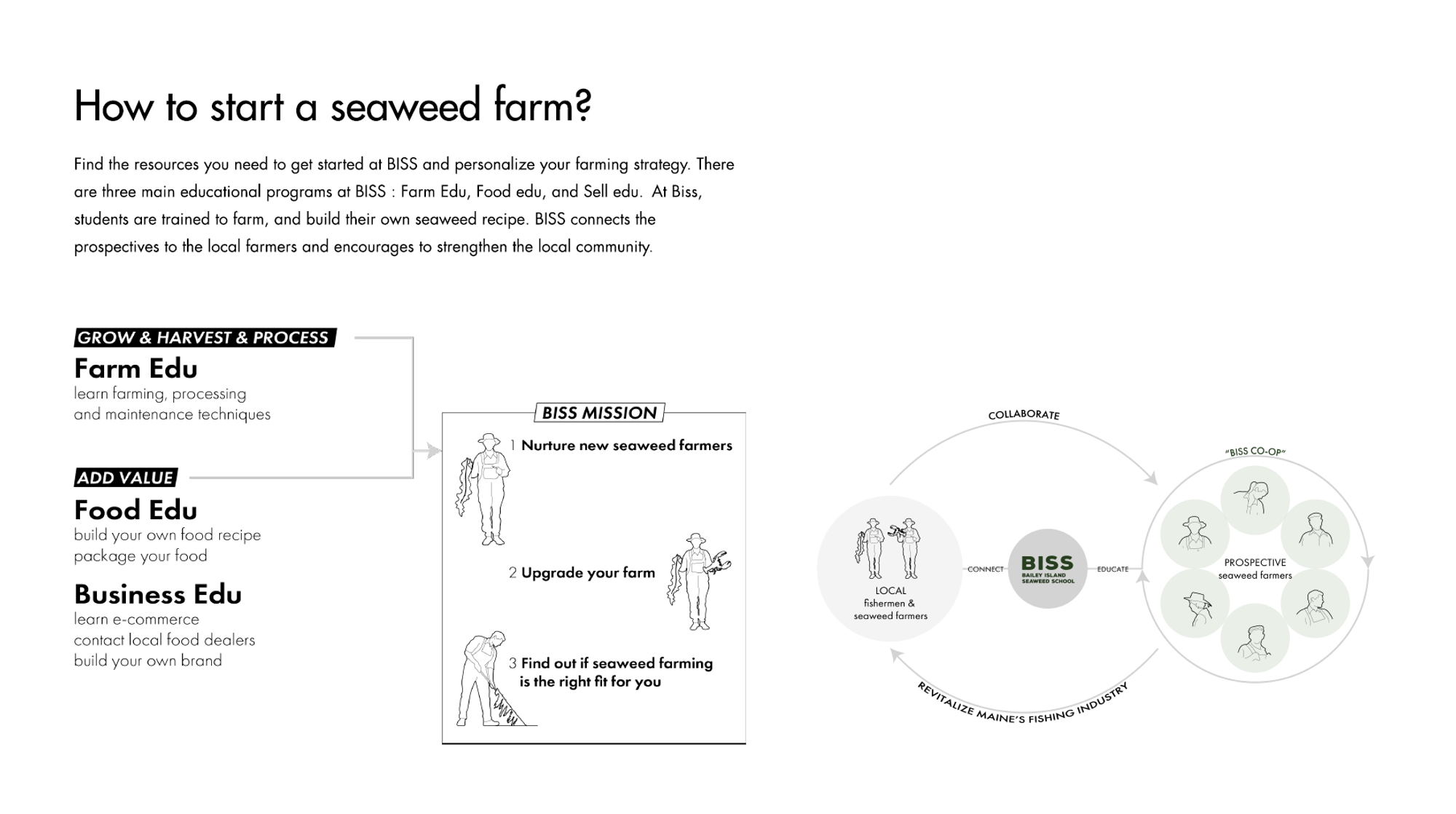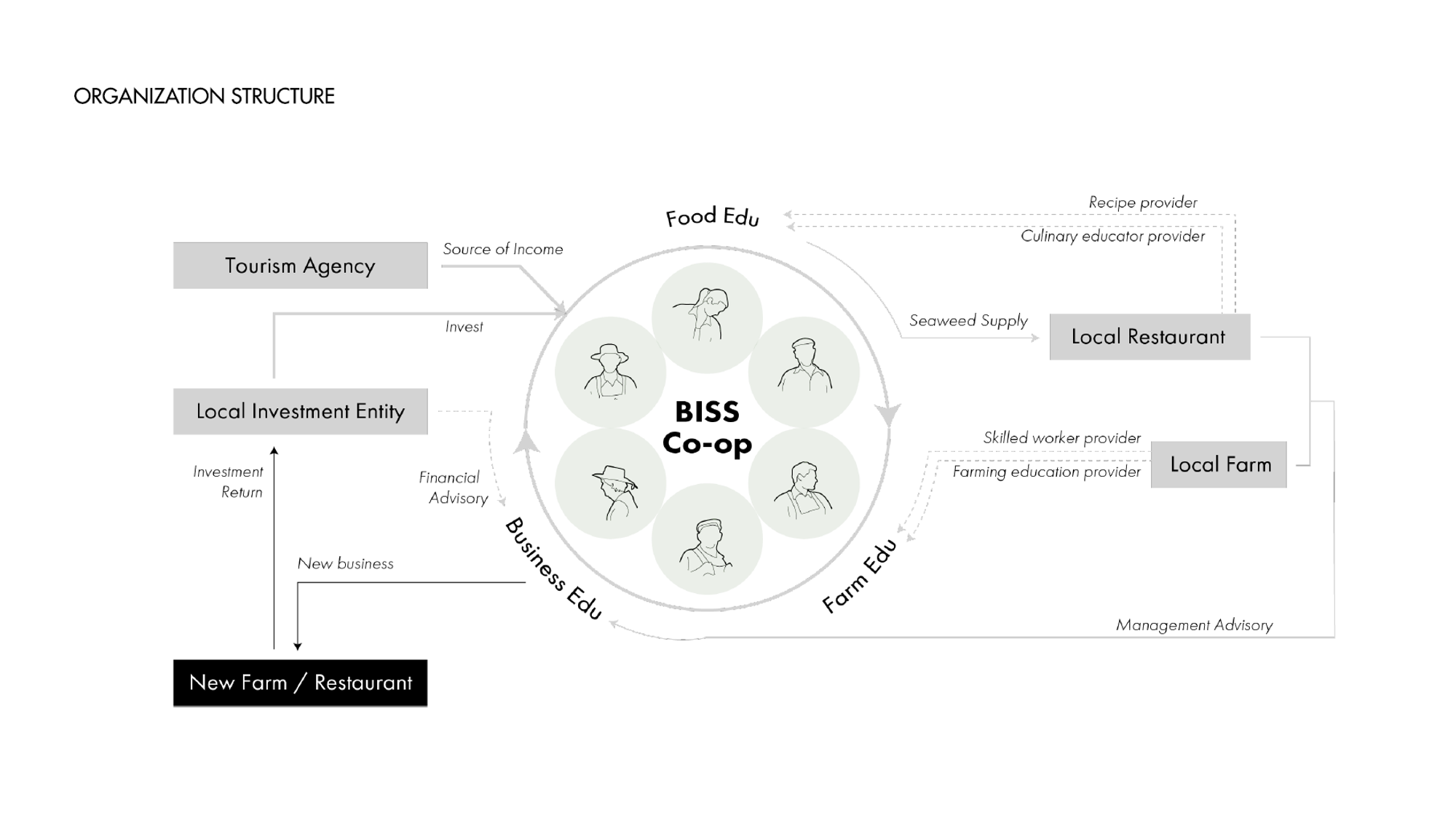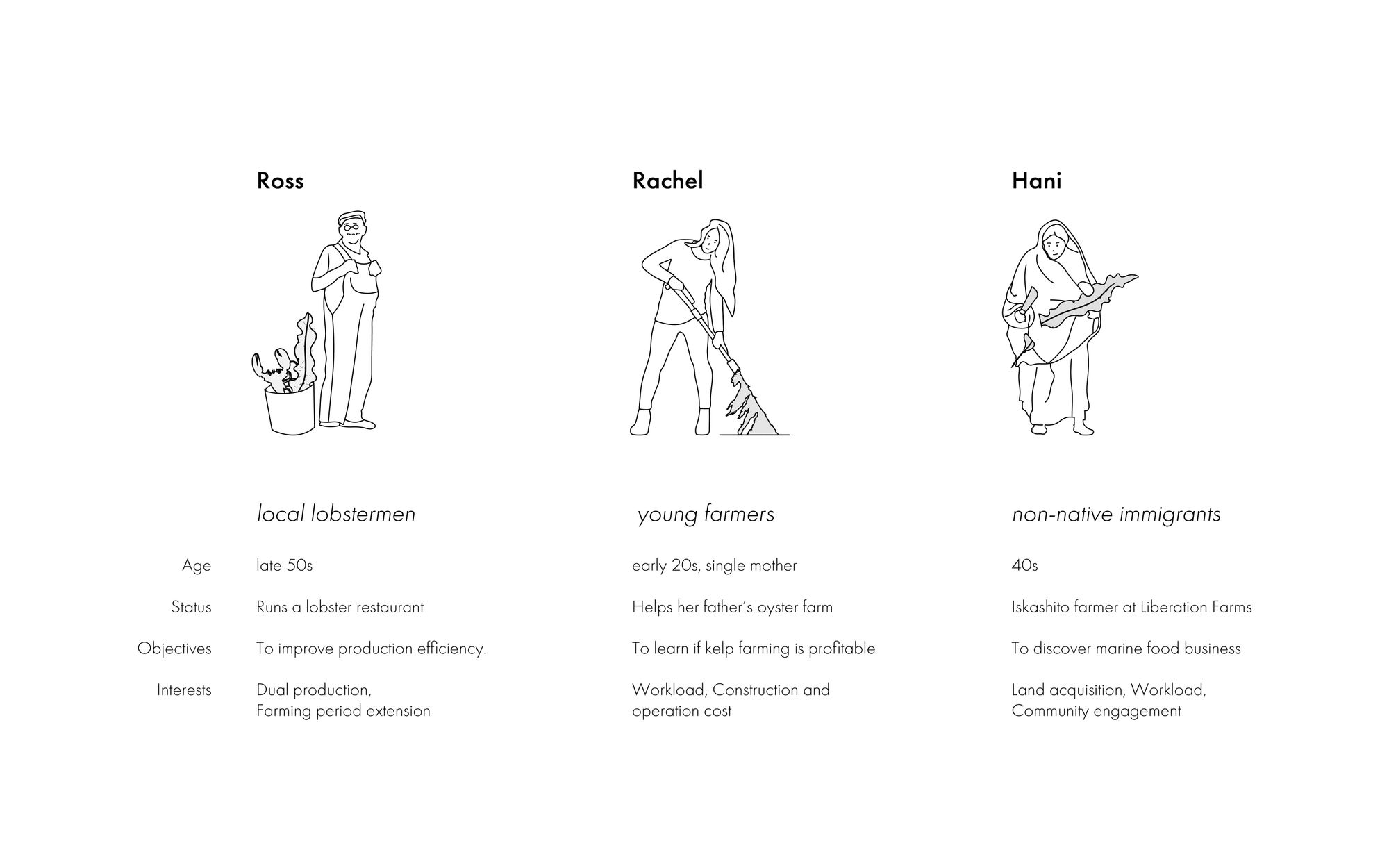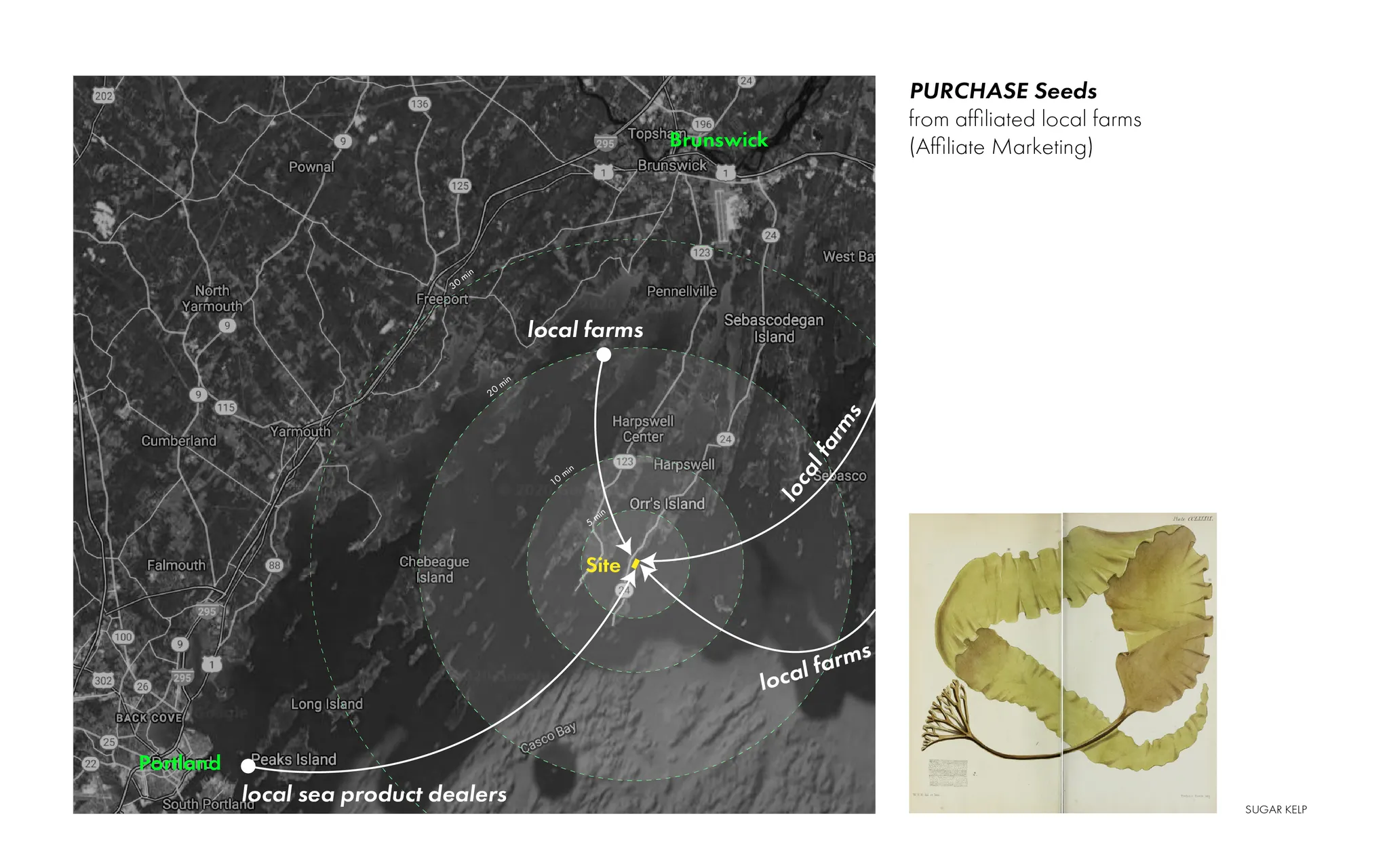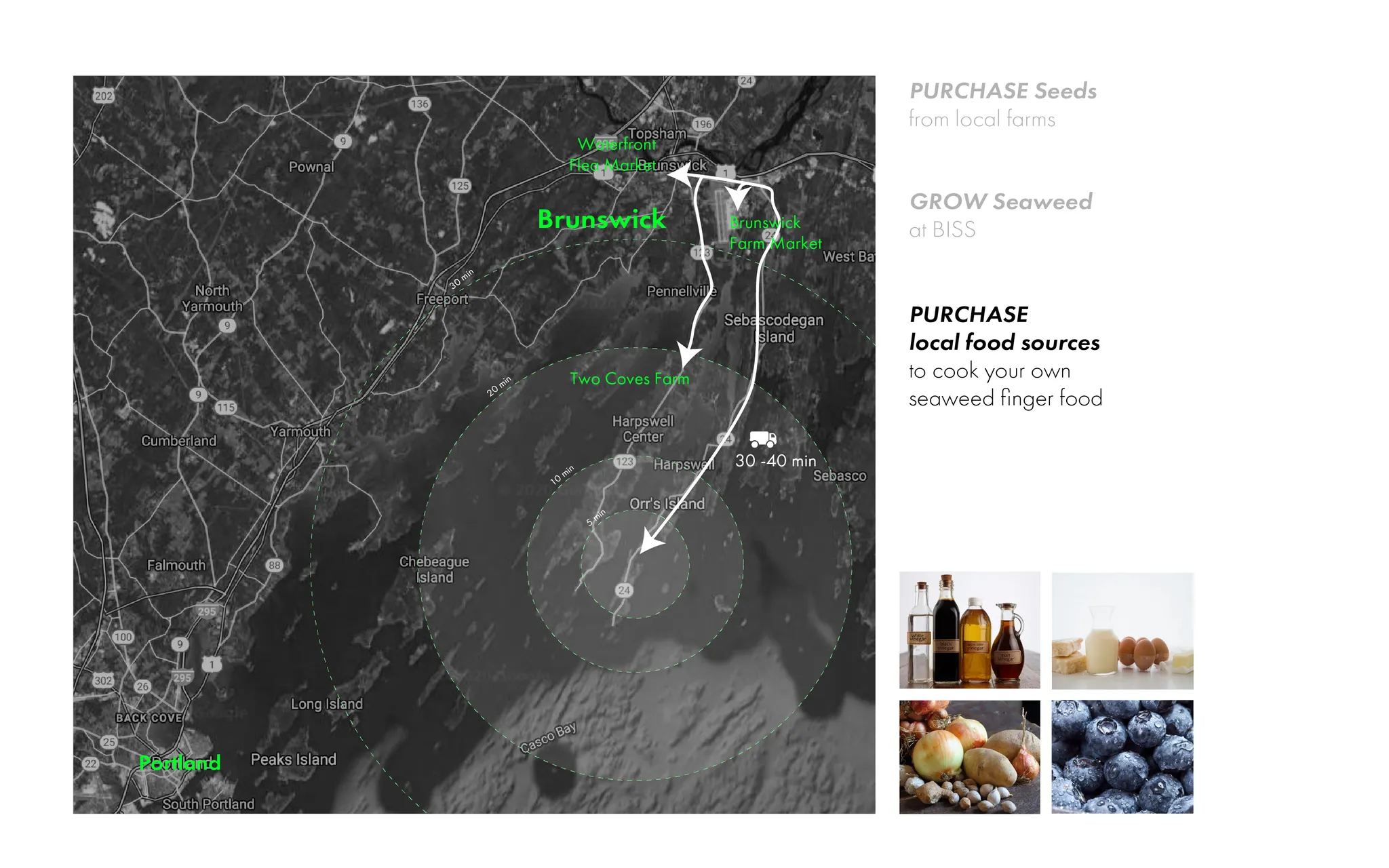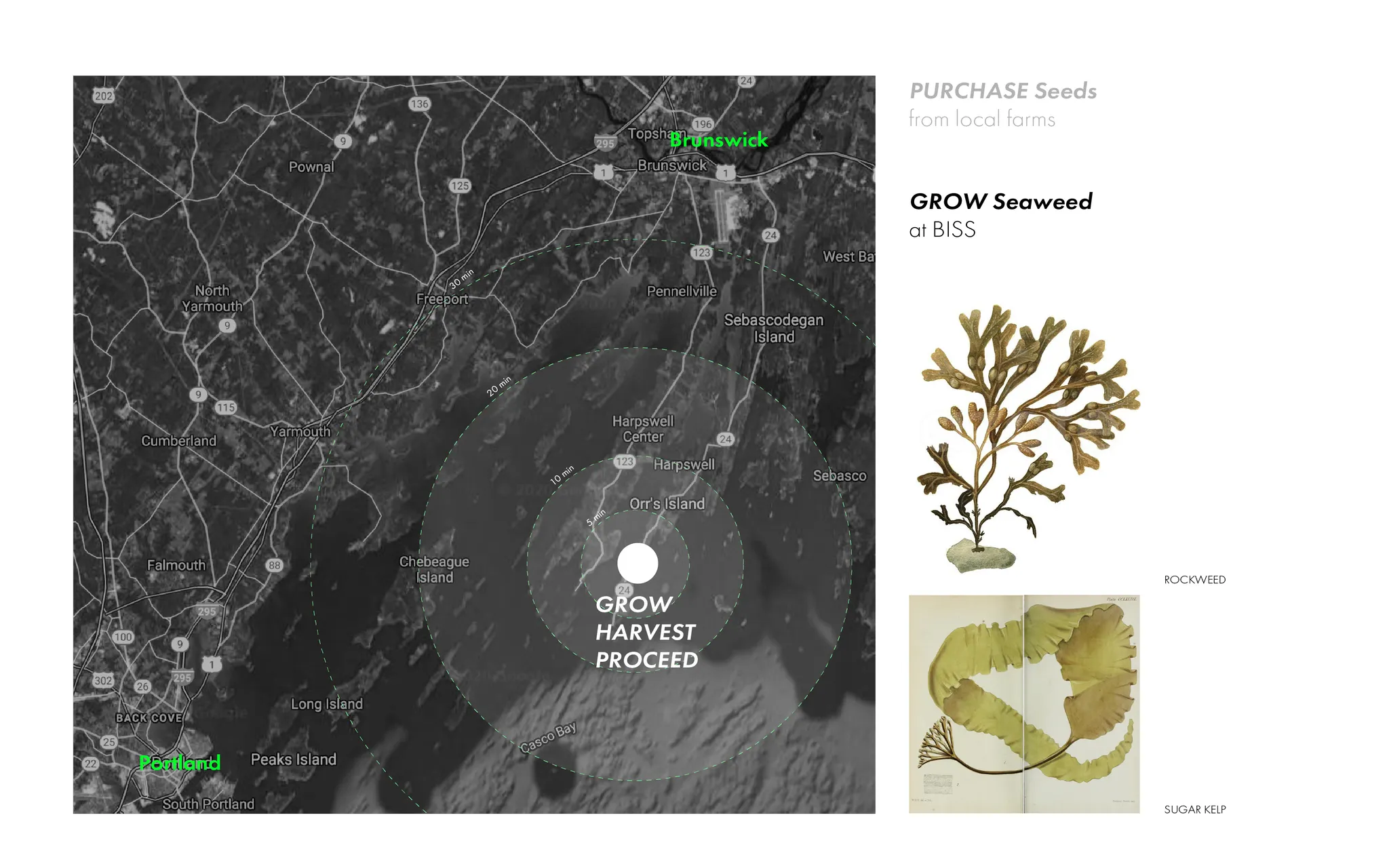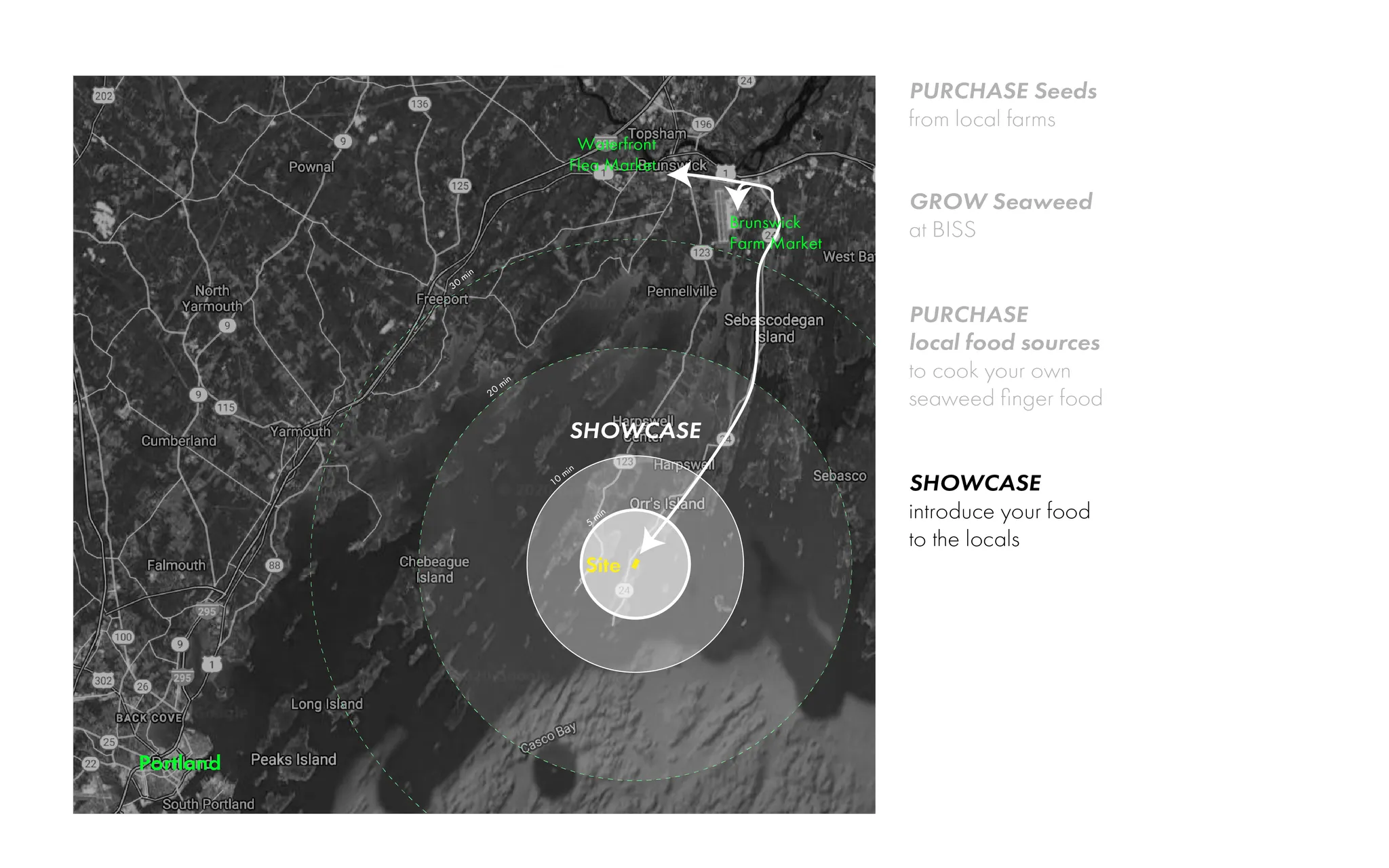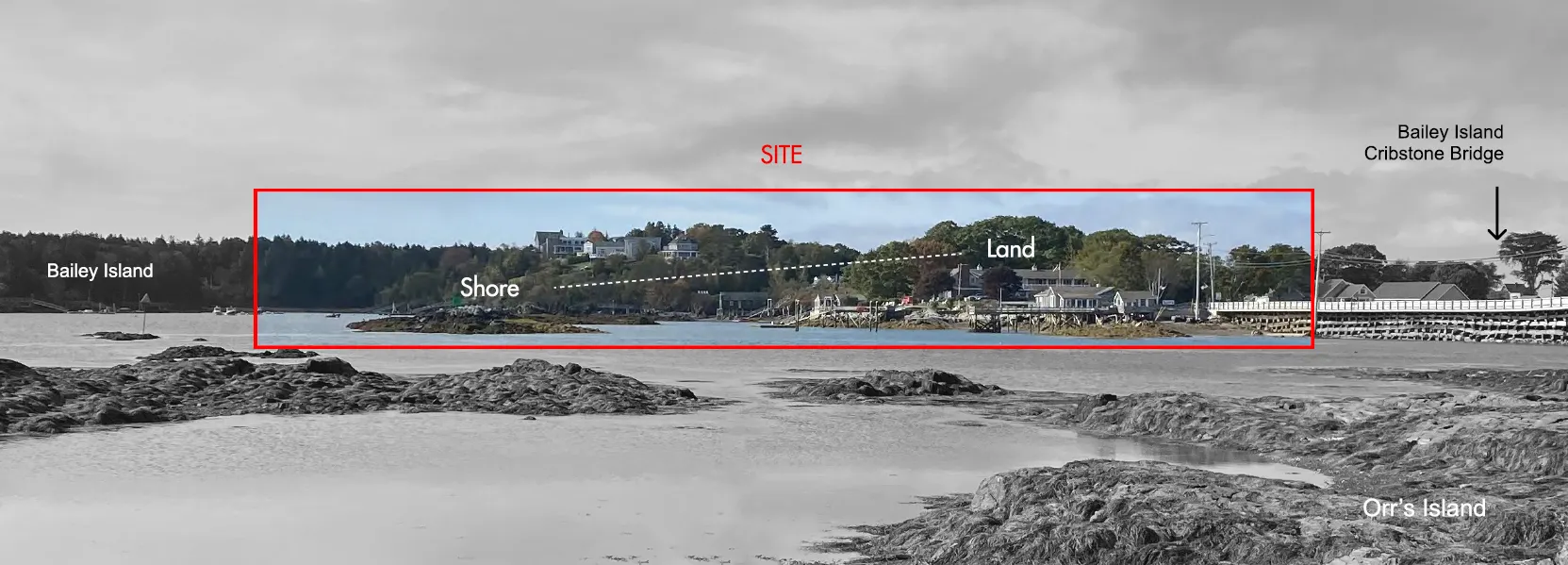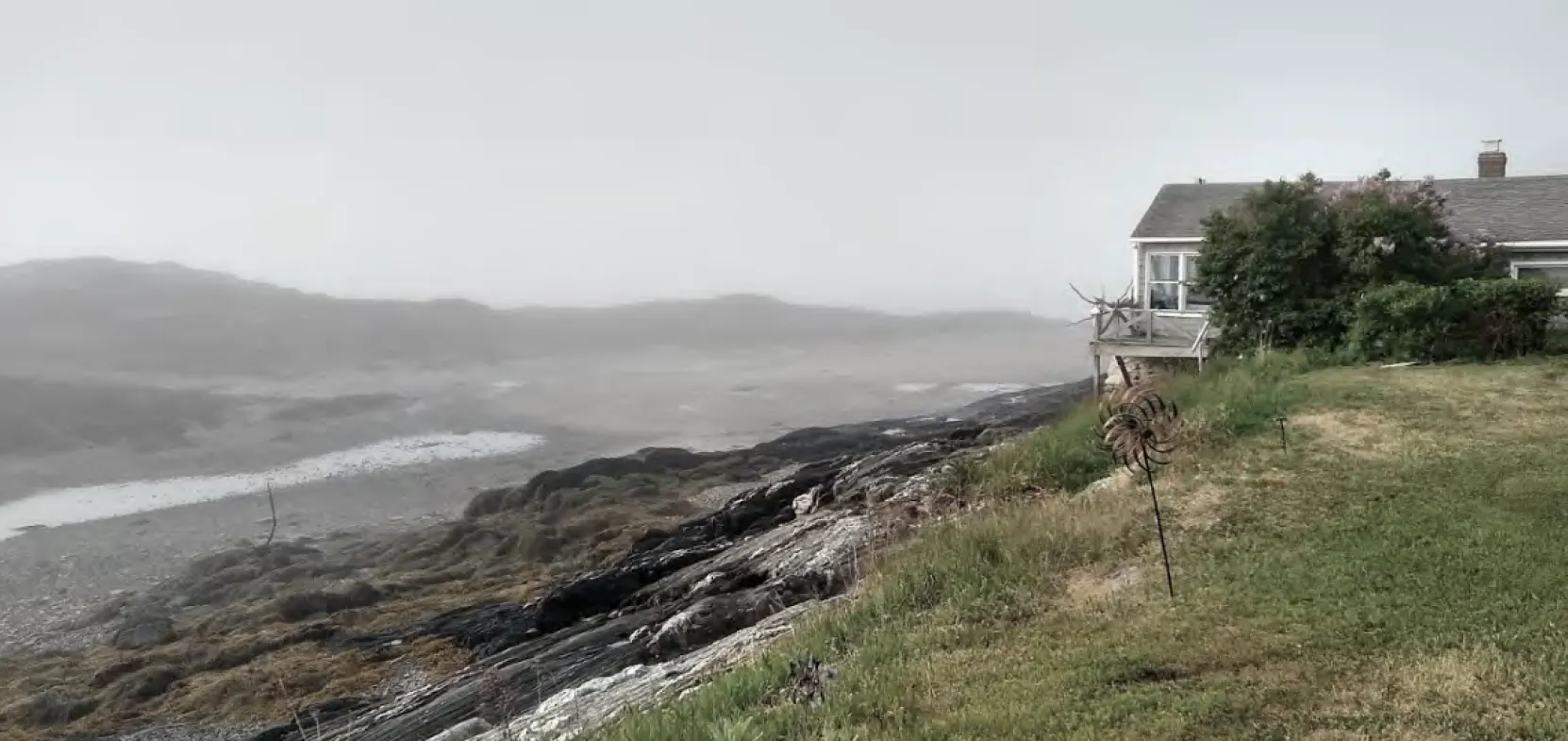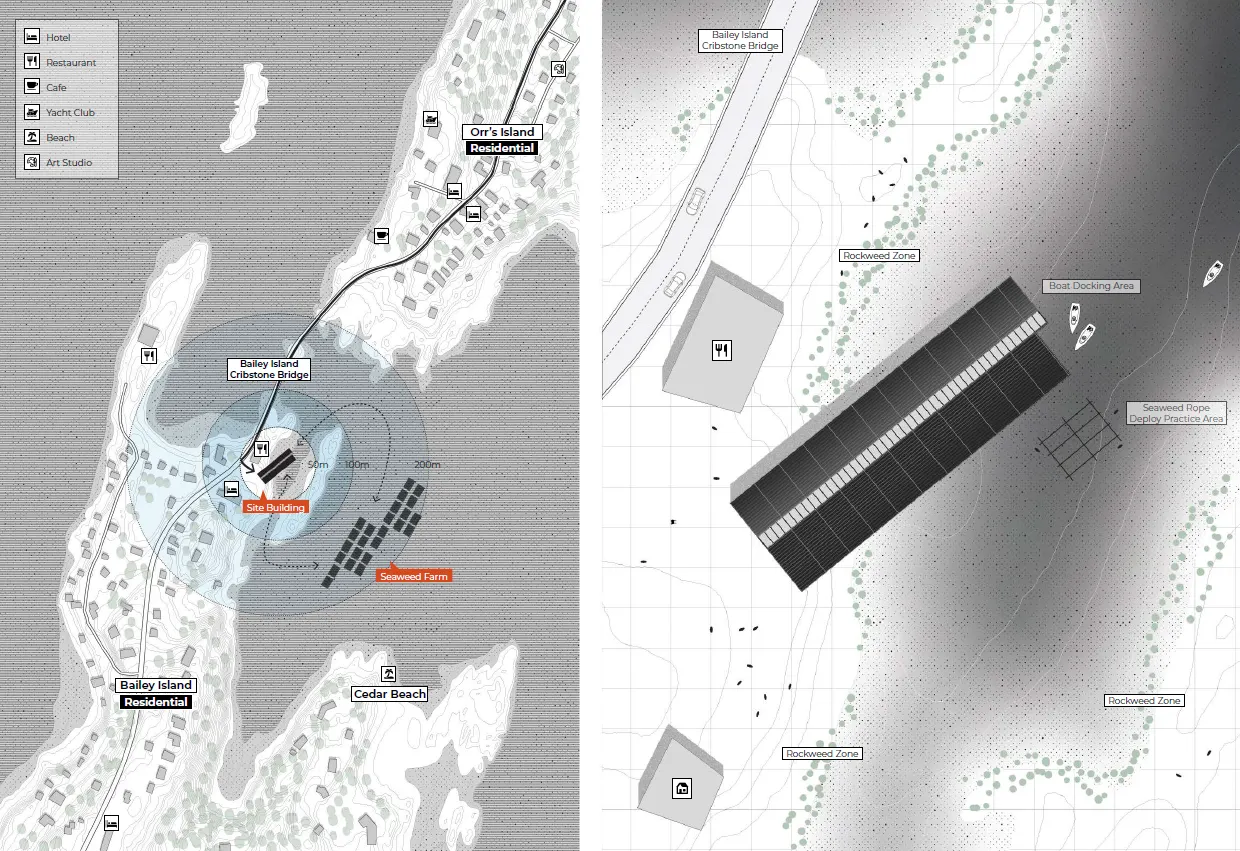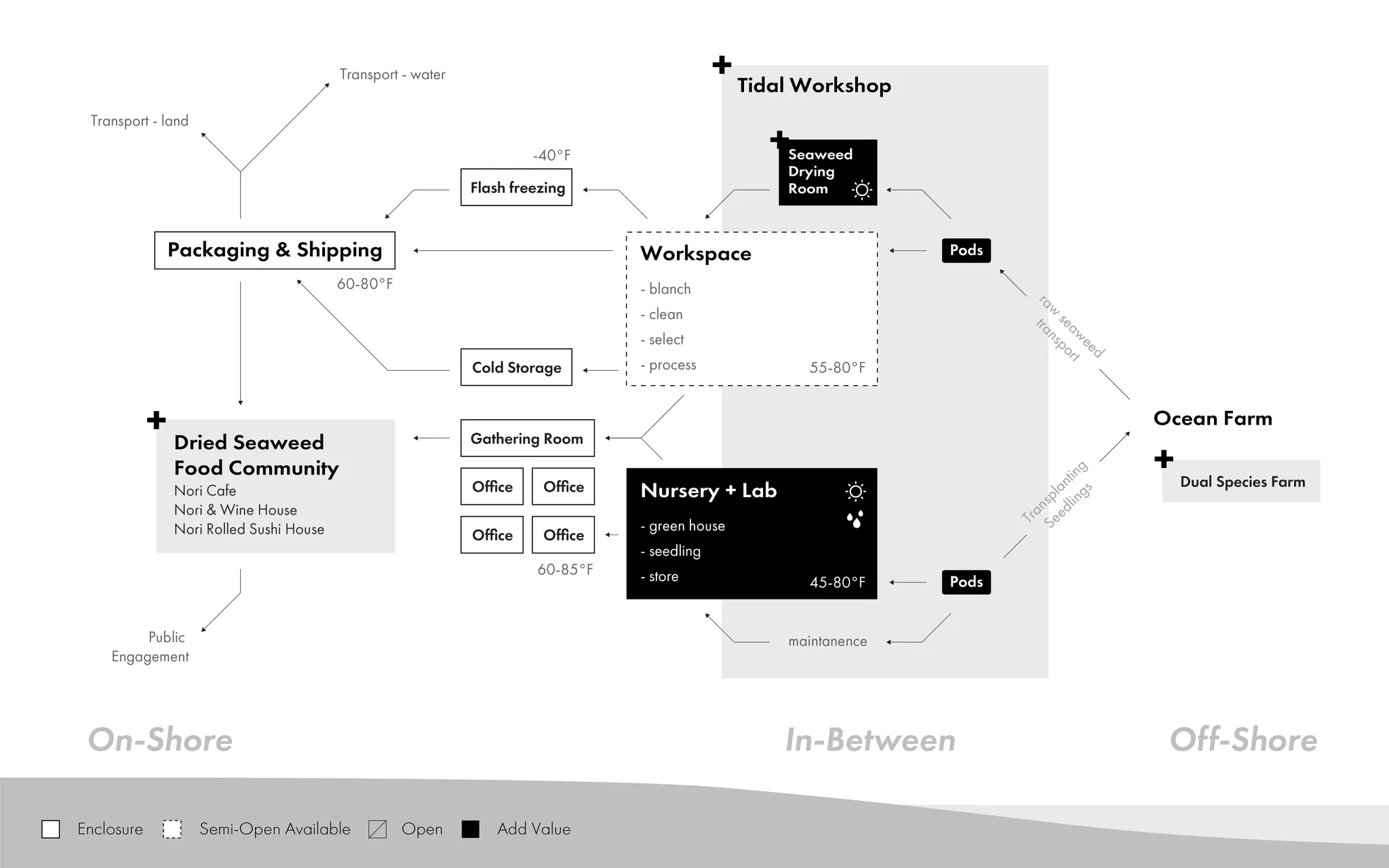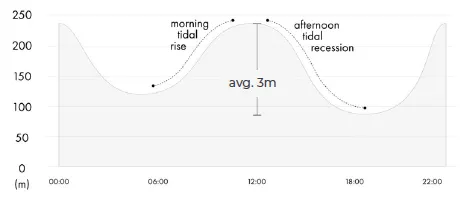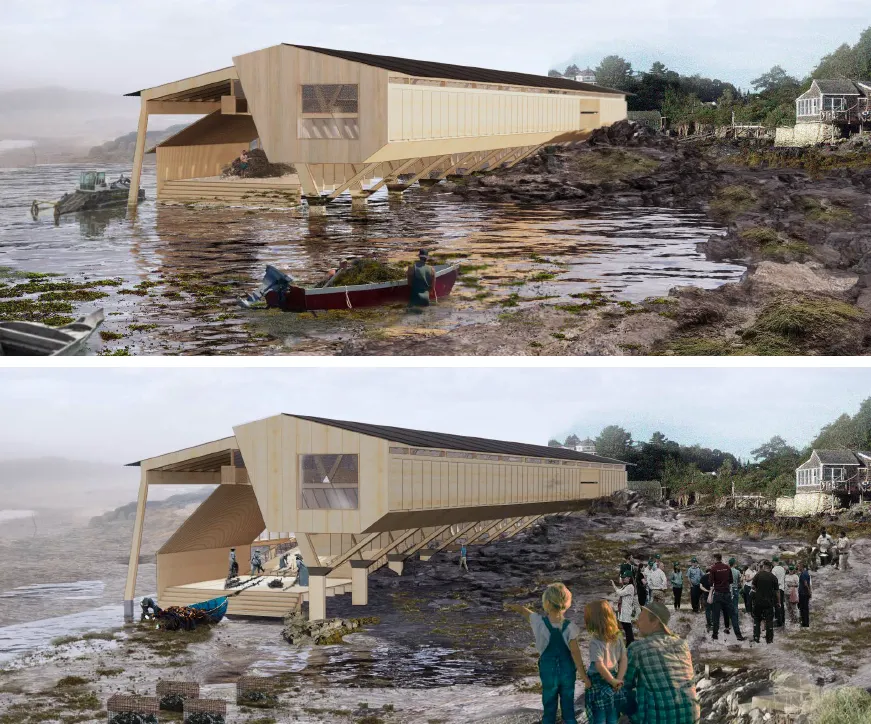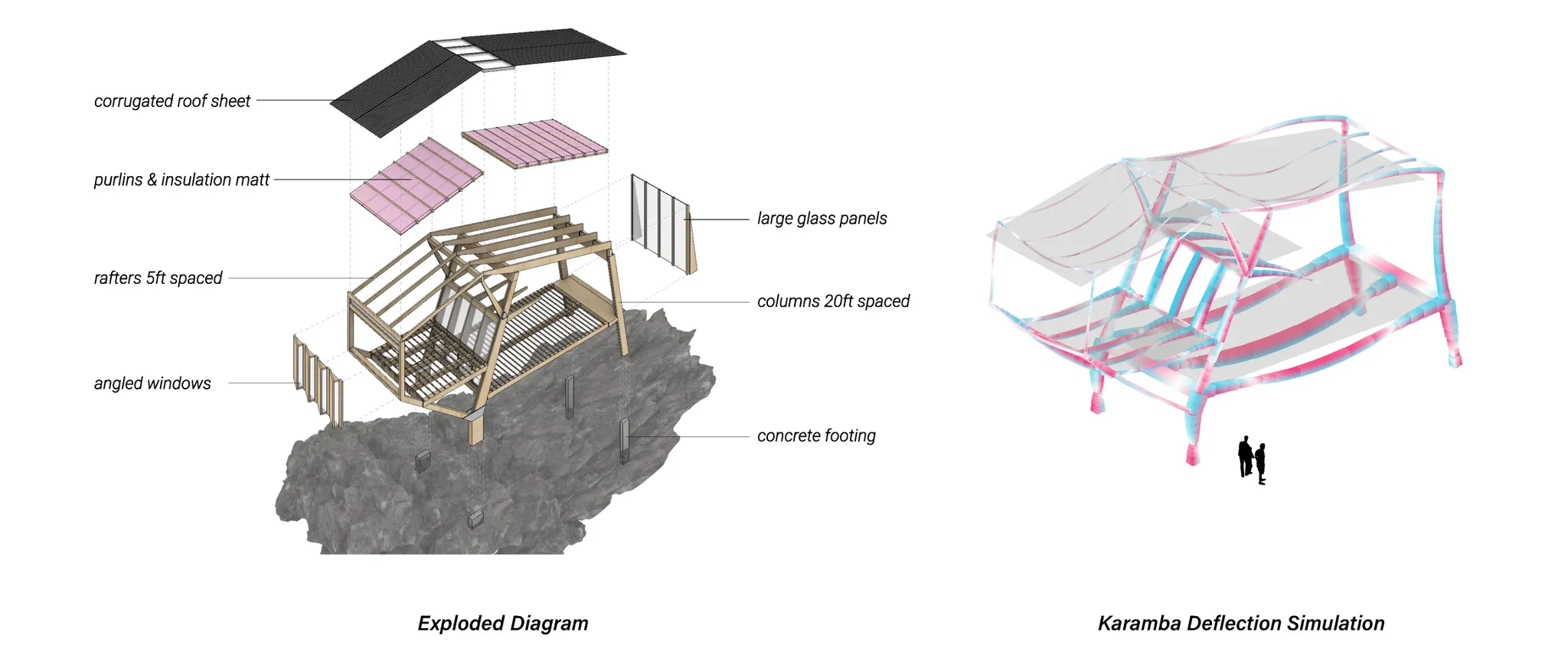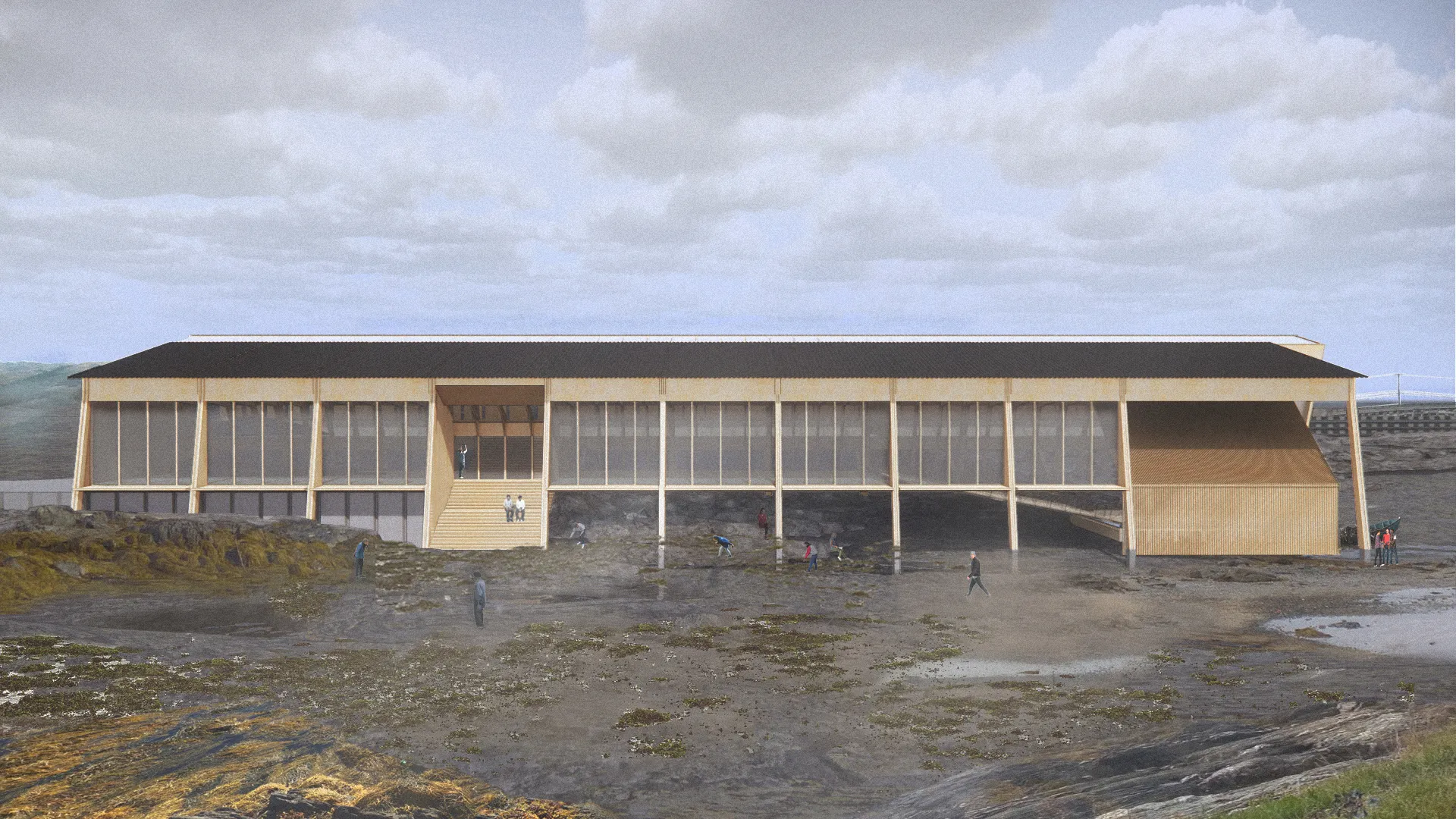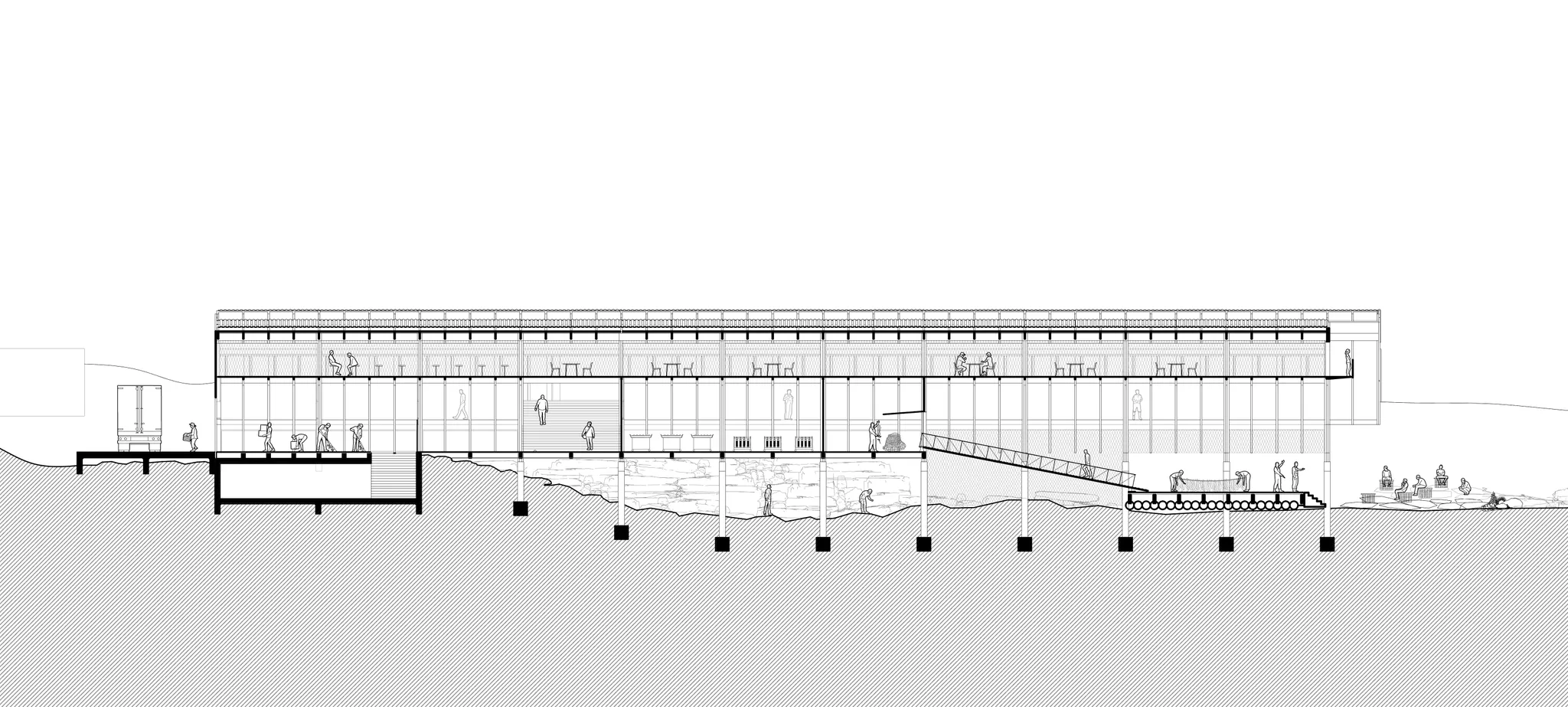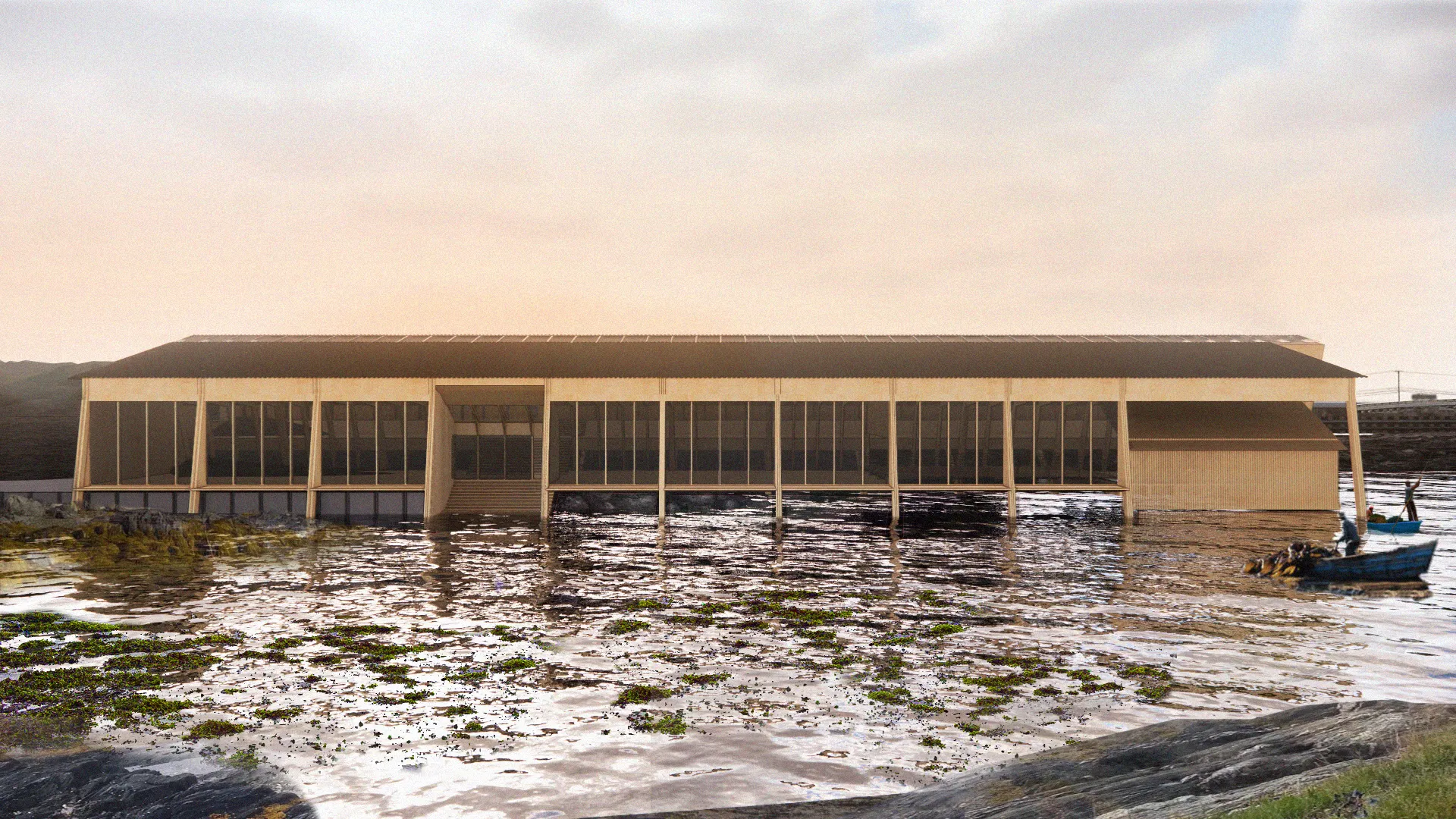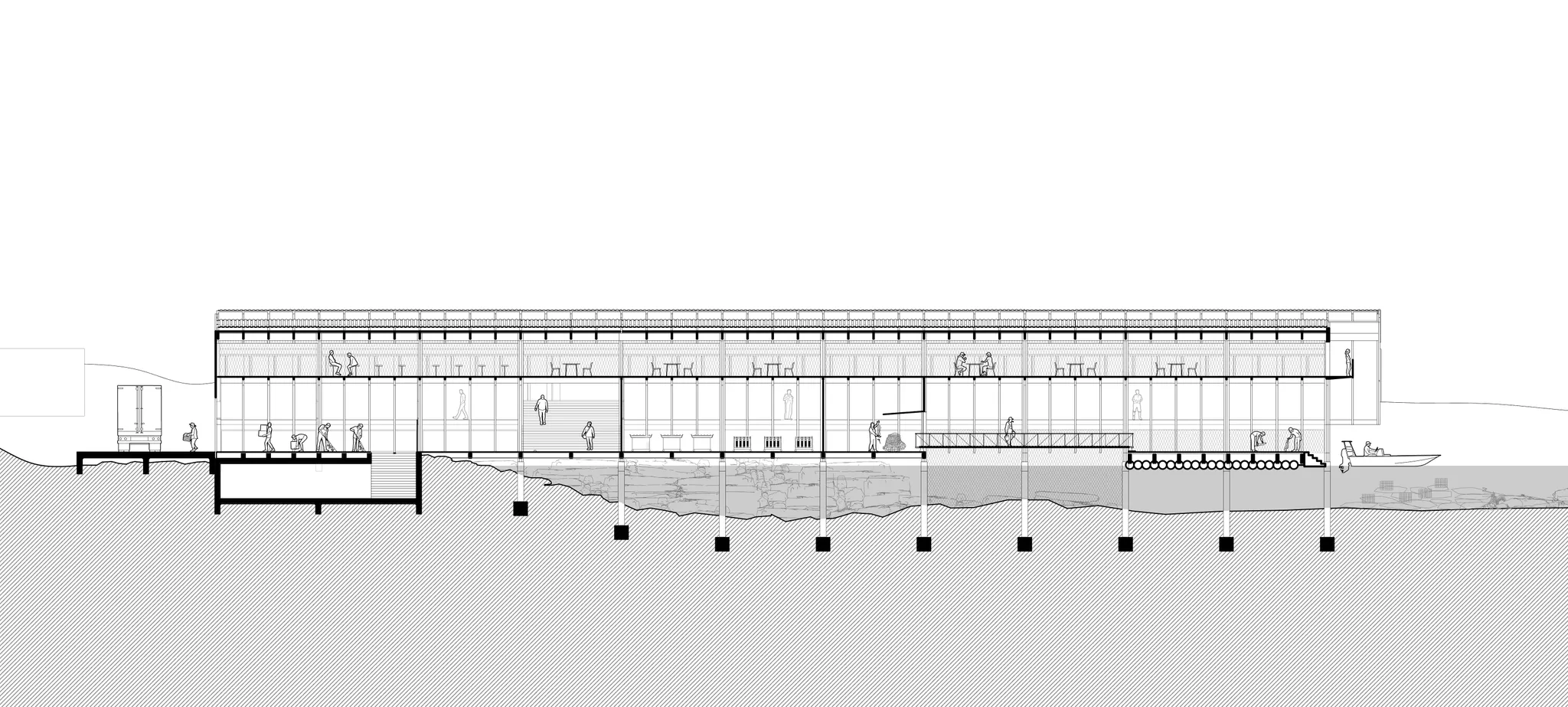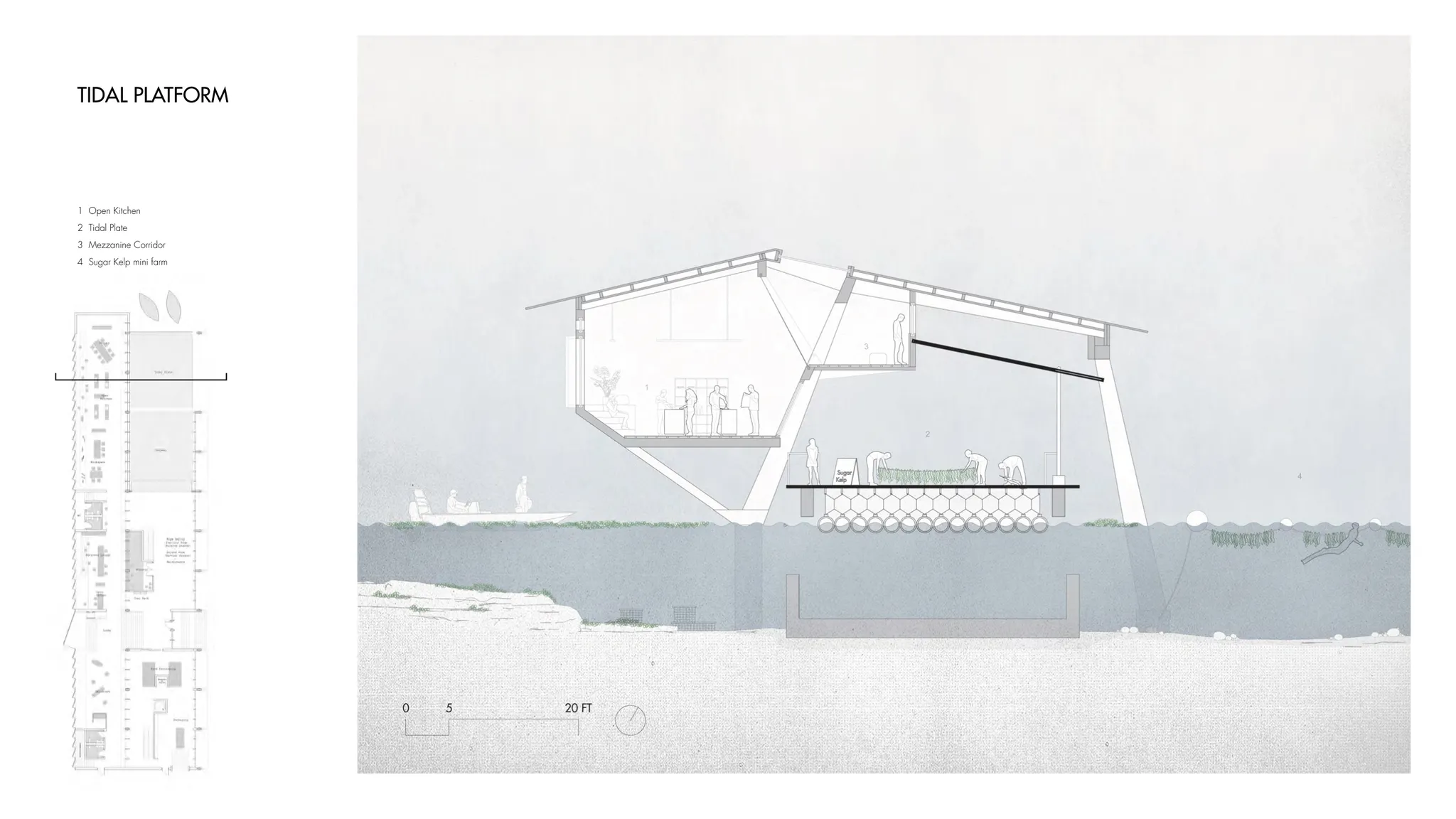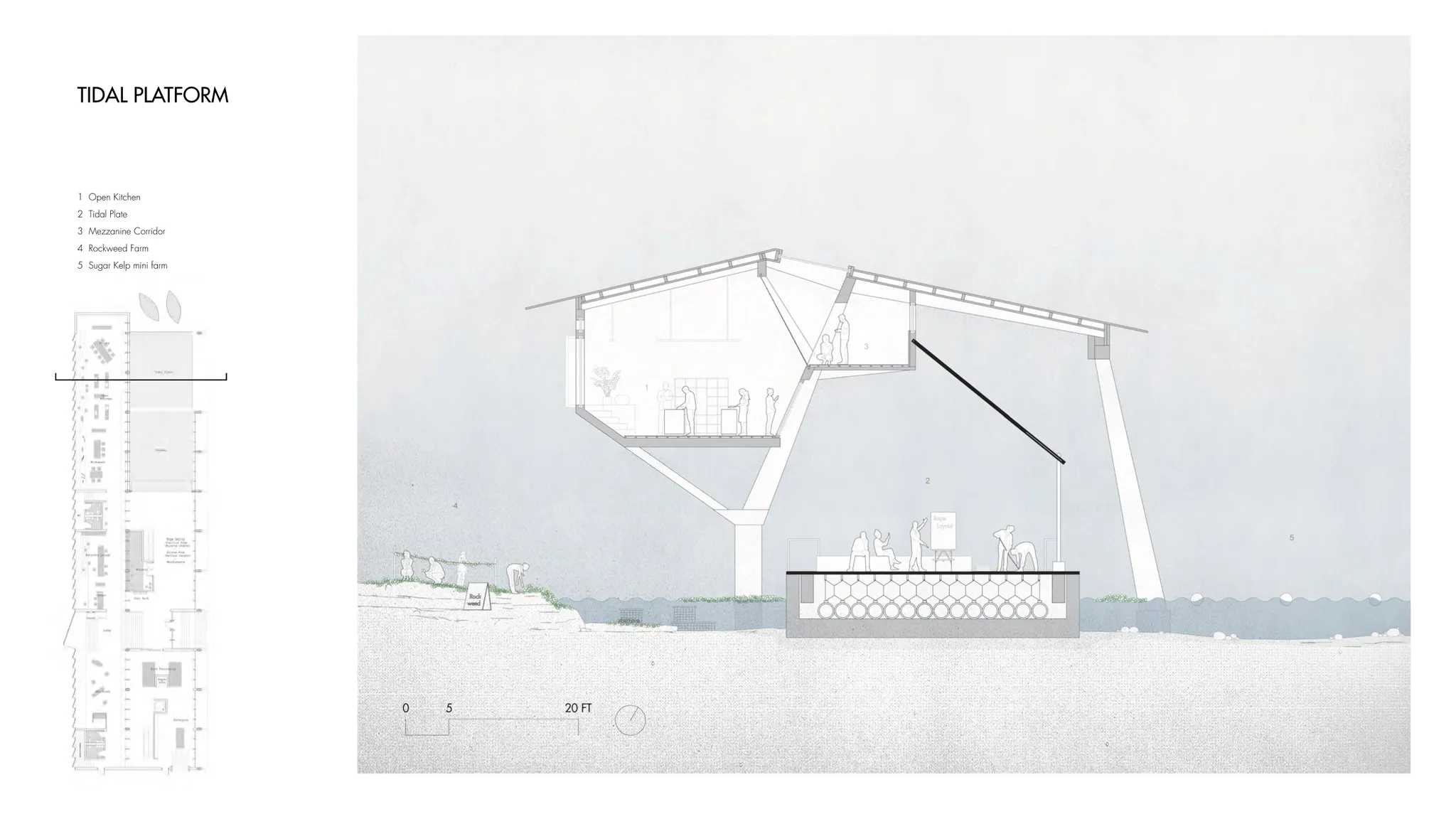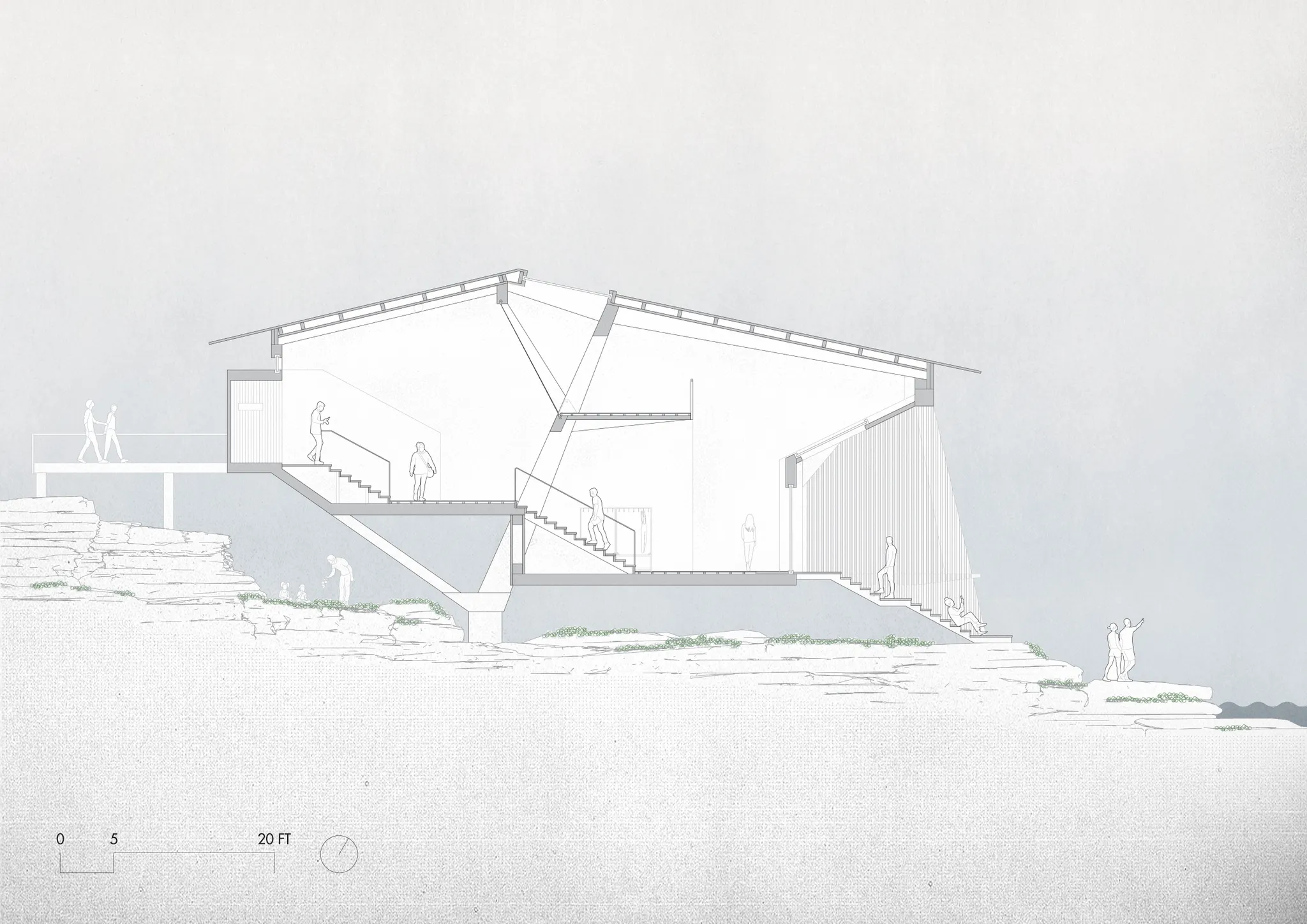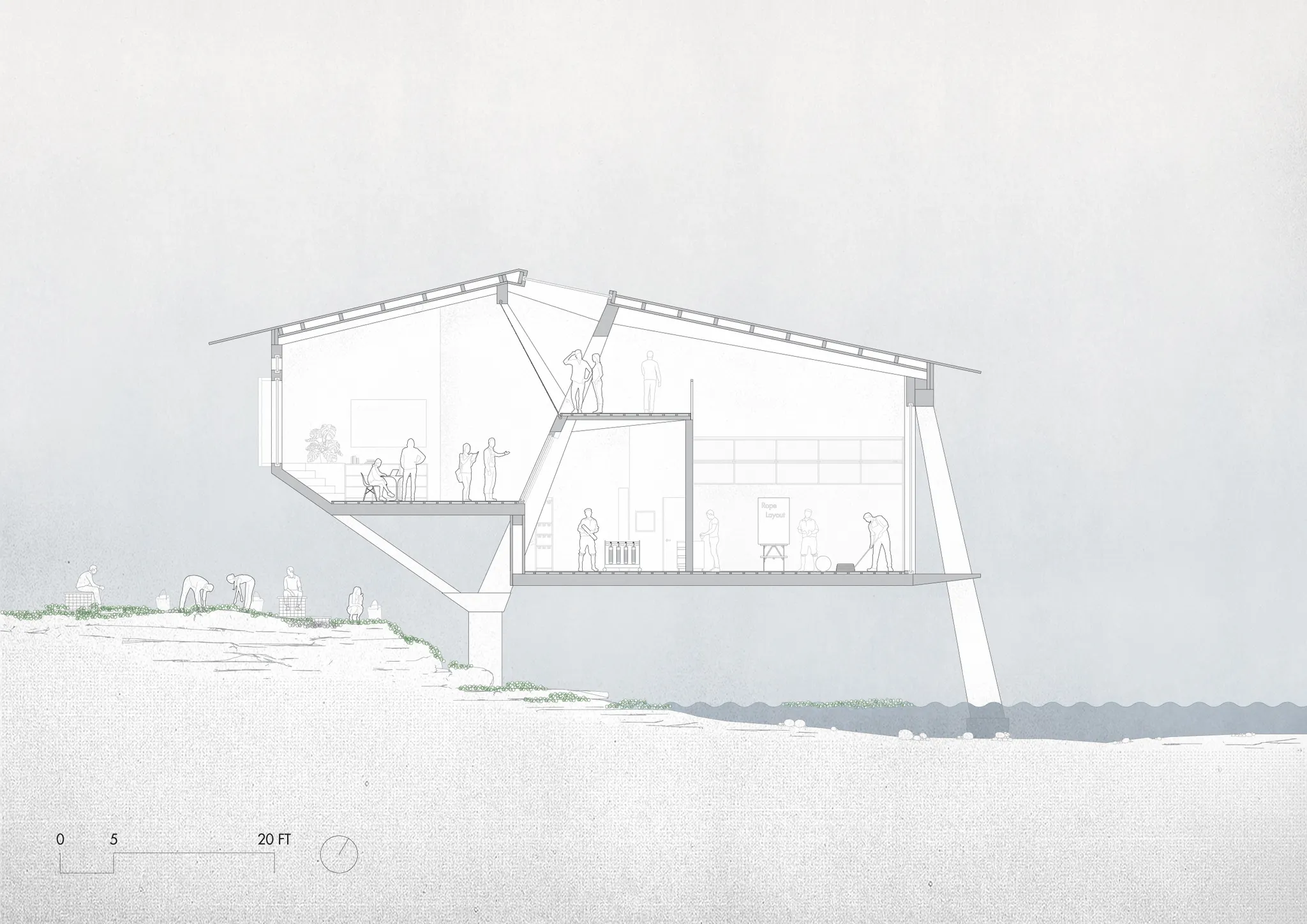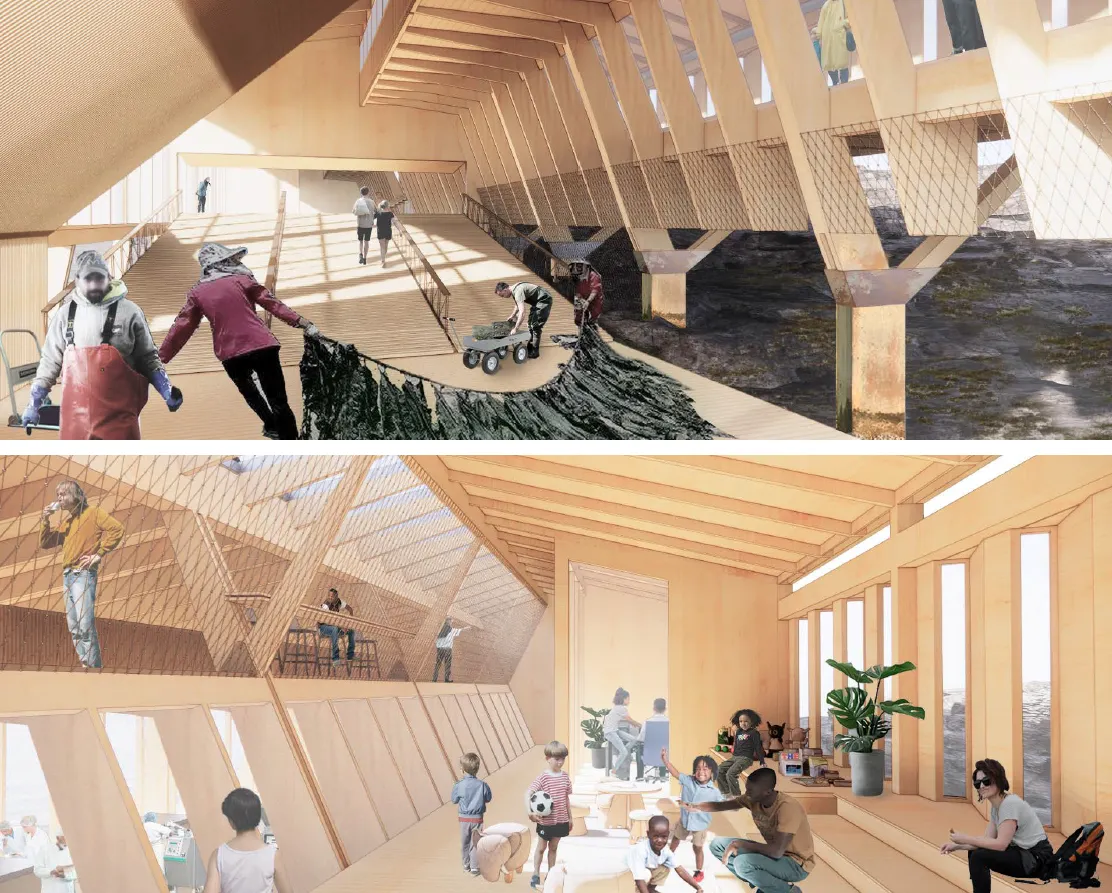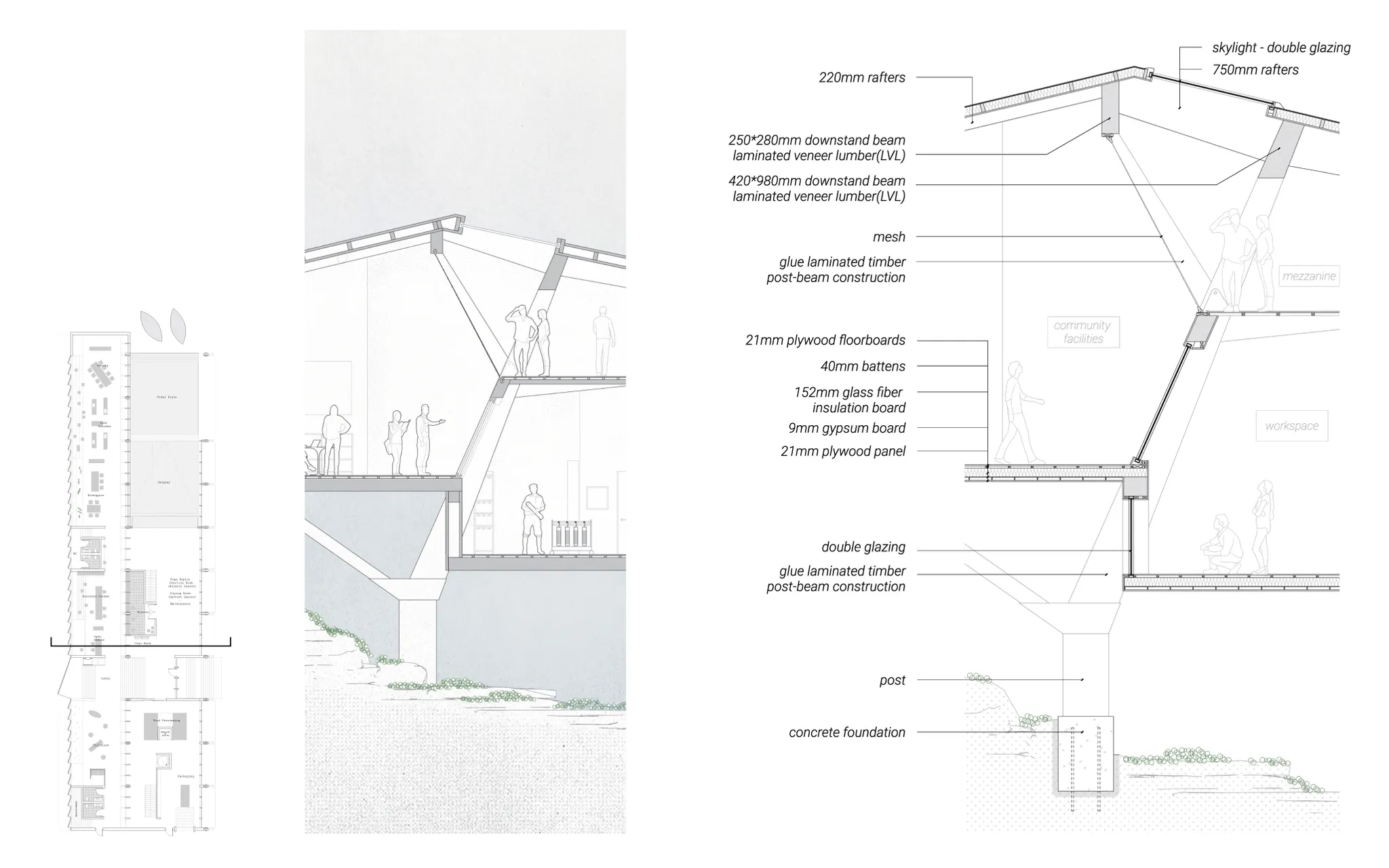MIT Core III Architecture Studio
Instructors: Sheila Kennedy, Cristina Parreno, and Rami El Samahi
- Type: Educational & Cultural
- Location: Bailey Island ME
- Group work with Stewart Wu(MIT M.Arch), Cloe Wang(MIT M.Arch)
- Role: Ideation for Architecture and Community Engagement, Drawings, Diagrams, Website Design
Bailey Island Seaweed School(BISS) is a creator's school where prospective seaweed farmers learn and personalize their farming strategy. The whole design is a ‘tidal workshop’, which borrows the power of nature to create distinct experiences during high and low tide. We aimed to diversify the learning experience through a 'shear' form to promote mutual caring between different user groups and leveraging the landscape experience distinct between high and low ide. More detailed work progress can be found on the website here.
Find the resources you need to get started at BISS and personalize your farming strategy. There are three main educational programs at BISS : Farm Edu, Food edu, and Sell edu. At Biss, students are trained to farm, and build their own seaweed recipe. BISS connects the prospectives to the local farmers and encourages to strengthen the local community.
We are designing programs at BISS with different user profiles to fit the need
of a larger community. These are the three signature users that we are thinking:
Local lobstermen who can teach life skills about the ocean in BISS during
the farming season / Young farmers and also mothers who needs to learn running
a seaweed farm and take care of children in BISS daycare center during
education / Immigrant farmers who are already running farms and need to
develop the skills in marine food business. We are hoping these user groups
could benefit from our lab facilities, business lessons and through networking.
Here is how we grow and produce foods at BISS.
1. Purchase Seeds
3. Purchase local food resources
2. Grow Seaweed
4. Showcase your food!
Site
High tide
Low tide
BISS is located between the two shores in our site boundary and the main circulation is designed to work with the existing site conditions. The average tidal difference is about 10 feet and the photo (top-right) was taken during the high tide. During low tide, the ground shows up. Taking the advantage of this ground exposure moment, BISS engages with the nature to touch and feel the power of nature and practical farming techniques from its dynamic learning space using the tidal difference.
Zoning Study
Taking advantage of the tidal difference, which is the essential natural force in the “in-between” space of inshore and off-shore, our structural system will be this locked-in-place platform moves vertically with the tide. The collective user activities that occurs on the tidal plate will be part of the architectural structure form evolving as a community space introducing visitors with vernacular farming culture and enabling the locals to explore new values of seaweed-based products.
The structure is elevated above the rockscape; we chamfered the corner to create a gap between the wooden materiality and the original rock ground and made it allow to have the floating effect of our structure elevated from the landscape. The staging-down structure will create the moment of shearing, potentially letting people to be easily exposed to others wherever they are. This unique landscape condition will consolidate the sense of community and mutual caring. and ultimately elevate the learning experience.
End of Page.
